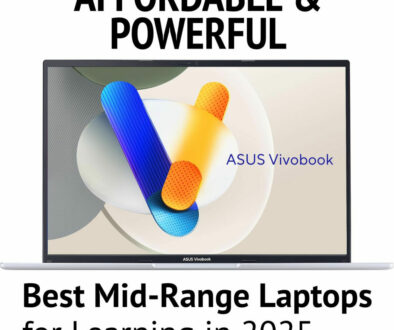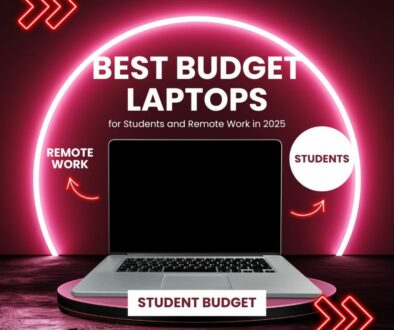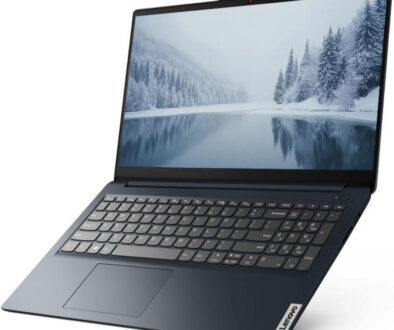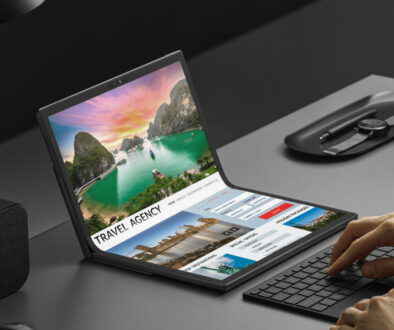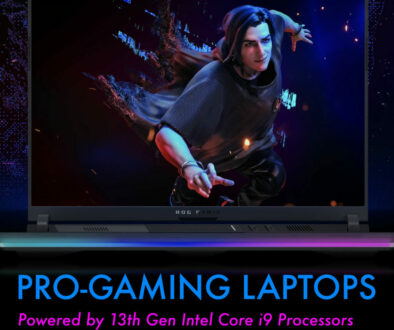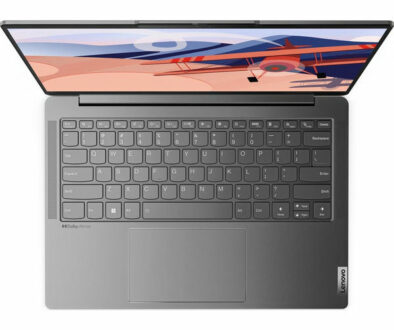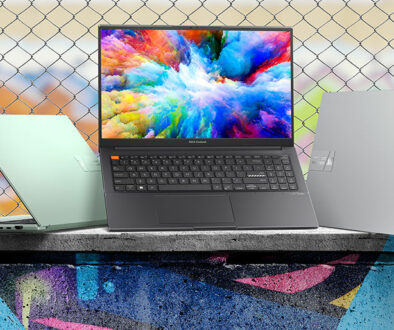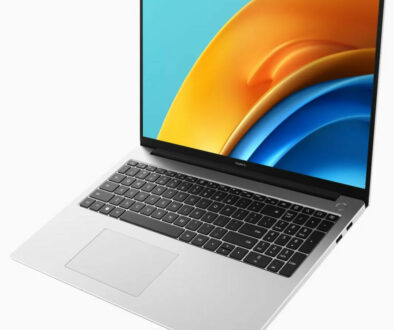Best Laptops for Students Under $800 – Top Picks for College, High School and Remote Learning
A personal laptop is no longer a luxury — it’s a necessity. Whether you’re a high school student working on research papers, a college freshman coding your first app or an online learner attending virtual lectures from home, a reliable laptop can make all the difference between falling behind and staying ahead. Here, we look at the best laptops for students for under $800.
Forget Budget Laptops, Midrange Laptops Are The Sweet Spot for Students
While premium laptops offer top-tier performance and features, not everyone has the budget to spend over $1,000. That’s where affordable yet capable laptops under $800 come in. These devices strike the perfect balance between price and performance, offering students everything they need to succeed — including powerful processors, long battery life, lightweight designs, and crisp displays — without breaking the bank.
This article is written to help students and parents navigate the ever-growing sea of budget laptops by highlighting the best options available in 2025 , based on real-world usage, reliability, and value. Whether you’re studying STEM, arts, business, or design, we’ve got a recommendation that fits your needs and budget.
Who is this for?
This article is tailored for a wide range of students and learners who need a dependable machine for academic use without spending a fortune. Here’s how different groups benefit from choosing the right budget-friendly laptop:
High School Students: If you’re still in high school, you likely need a device that handles word processing, web browsing, video conferencing, and basic multimedia tasks. Look for something lightweight, durable, and easy to carry between classes , with enough power to handle school-issued software and apps like Google Classroom or Microsoft Office.
College & University Students: College students often require more performance for demanding workloads such as coding, data analysis, graphic design, or video editing . A mid-range laptop with at least 8GB of RAM with 16GB of RAM becoming more common and a solid-state drive starting from 256GB will help you stay productive through semesters of heavy multitasking and project-based learning.
Online Learners & Remote Students: With remote and hybrid learning still common across many institutions, having a laptop with a clear webcam, good microphone quality, and strong Wi-Fi connectivity is essential. You’ll want something that keeps up during long Zoom calls and runs learning management systems smoothly.
STEM Majors: Science, technology, engineering, and math students often run simulations, code in multiple environments, or analyse large datasets. For these users, prioritise laptops with better processors (Intel Core i5/i7 or AMD Ryzen 5/7), 16GB RAM, and optional Linux compatibility .
Creative Students: Whether you’re into photography, music production, or digital art, creative students benefit from color-accurate displays, touchscreen functionality, and stylus support . Look for models that support Adobe Creative Cloud or similar software with ease.
Vocational & Trade School Students: Students in technical programs like automotive repair, construction, or healthcare may need rugged builds, specialised software compatibility, or field-ready durability. A convertible or 2-in-1 model could be especially useful for hands-on learning.
No matter which category you fall into, this article will help you find the best laptop for your specific academic journey — all within a budget of $800 or less.
What to Look for in a Student Laptop under $800
Buying a laptop under $800 doesn’t mean you have to settle for poor performance or a short lifespan. In fact, with the right specs and features, a budget-friendly laptop can serve you well throughout your academic years — and even beyond. Here’s what to look for when shopping for a student laptop in this price range:
1. Processor (CPU) – The Brain of Your Laptop
The processor determines how fast and efficiently your laptop runs. For most students, an Intel Core i5, AMD Ryzen 5, or Apple M1/M2 chip offers the best balance of speed and efficiency. Avoid entry-level Celeron or Ryzen 3 chips unless you’re only doing light web browsing and document editing.
2. RAM & Storage – Multitasking and File Space
Aim for at least 8GB of RAM to comfortably run multiple browser tabs, apps, and documents at once. 16GB RAM is ideal if you’re using heavier software like Photoshop or AutoCAD. As for storage, 256GB SSD minimum is recommended — avoid mechanical hard drives (HDDs) for faster boot times and better durability.
3. Display Size & Quality – Clarity Matters
Most student laptops fall between 13-inch and 15.6-inch screens . Choose based on portability vs workspace preference. Always go for Full HD (1920×1080) resolution or higher for sharp visuals. OLED or IPS panels offer better color accuracy and viewing angles, which is great for creative students.
4. Keyboard & Trackpad – Comfort for Long Sessions
You’ll likely be typing essays, taking notes, or coding for hours — so comfort matters. Look for spill-resistant keyboards, adequate key travel, and a responsive trackpad . Backlit keys are also helpful for studying in low-light conditions.
5. Battery Life – Power Through the Day
A long-lasting battery is crucial for students who move between classes or study away from outlets. Aim for at least 8–10 hours of real-world battery life , especially if you’re planning to use your laptop all day without charging.
6. Portability & Durability – Built to Last
Portability includes both weight and build quality . Lightweight laptops (under 3.5 lbs) are easier to carry in a backpack, while sturdy aluminium or reinforced plastic frames ensure your laptop survives daily bumps and drops.
7. Ports & Connectivity – Stay Plugged In
Make sure the laptop has the ports you actually need:
- USB-C / Thunderbolt for fast charging and external display support
- USB-A for older peripherals like flash drives or mice
- HDMI if you plan to connect to a monitor or projector
- SD card reader is a bonus for photography or media students
8. Price vs Performance – Get the Most Bang for Your Buck
Not every expensive-looking laptop is worth the price. Focus on specs that impact your actual use case. For example, a student majoring in English might not need a dedicated graphics card — but someone in architecture probably will.
9. Webcam & Audio – Virtual Class Essentials
With remote learning still relevant, a 720p or 1080p webcam, along with dual microphones and decent speakers, ensures you’re seen and heard clearly during virtual meetings and presentations. If you intend to get on video calls often, a Full HD 1080p resolution webcam is preferred. This will ensure that there is plenty of details in your ‘talking head’.
10. Operating System – Windows, macOS, or Chrome OS?
Windows : Most versatile, supports wide range of software and hardware
macOS : Excellent for creatives, developers, and those invested in Apple ecosystem
Chrome OS : Budget-friendly, simple interface, cloud-focused — great for younger students
Choosing the right operating system depends largely on your preferred software and learning environment.
Top Picks – Best Laptops for Students Under $800
To make things easier, we’ve reviewed and tested some of the best laptops under $800 that offer strong performance, long battery life, and features tailored to students’ needs — whether you’re studying computer science, design, business, or the arts.
1. Best Overall – Lenovo IdeaPad Slim 5 (AMD Ryzen 7)
The Lenovo IdeaPad Slim 5 is our top pick for most students due to its excellent balance of performance, value, and build quality. Powered by an AMD Ryzen 7 processor , this laptop delivers smooth multitasking , even when running multiple browser tabs, video calls, and productivity apps at once. It comes with 16GB RAM and 1TB SSD storage , ensuring plenty of room for documents, media files, and software like Microsoft Office or Adobe Creative Cloud.
Display : 16″ WUXGA 1920 x 1200 – bright, clear, and great for both work and streaming
Battery : Up to 10 hours – perfect for a full day of classes without needing a charger
Portability : Lightweight at just over 3.5 lbs with slim bezels
Ports : USB-C, HDMI, two USB-A ports, and an SD card reader
Why We Love It : Powerful specs at a budget-friendly price. Ideal for general use, writing, research, and creative projects.

2. Best for Mac Users – Apple MacBook Air M2 (2022) and M3 (2024) Refurbished
The latest Apple MacBook Air M4 (with 16GB RAM) is available to students at $899 with education savings from Apple. That broke our $800 limit for this article so watch out for Black Friday, Cyber Monday or any seasonal sales if you can hold off. If not and if you are already invested in the Apple ecosystem or prefer macOS for design, music production or coding, the Apple MacBook Air M2 or M3 remains one of the best student laptops — especially when bought refurbished from Apple or trusted resellers .
Despite being a few generations old, the M2 and M3 chips still hold up impressively well. Heck even the M1 chip will hold a candle and support Apple Intelligence. These offer smooth performance for everyday tasks, web browsing, light video editing, and programming. With 8GB RAM and 256GB SSD storage, it’s more than enough for most students — and macOS ensures a clean, secure experience.
Display : 13.3″ Retina display – crisp and color-accurate
Battery : Up to 15 hours – among the longest-lasting in its class
Portability : Ultra-lightweight and fanless design
Ports : Two Thunderbolt / USB-C ports
Why We Love It : Excellent build quality, silent operation, and strong resale value. Great for designers, musicians, and students who need macOS compatibility.

Note: At the time of writing the MacBook Air 13 2025 M4 is available ‘off-the’shelf’ from online retailers for $850, which is $50 above our budget. Normally priced at $999, it is 15% cheaper. This makes it close to or cheaper than Education pricing or Student Discount, so consider buying form online retailers for a better deal.
3. Best for Portability – ASUS ZenBook 14 Pro OLED
For students who commute between campuses or carry their laptops daily, the ASUS ZenBook 14 Pro OLED offers a perfect blend of portability, style, and screen quality. Weighing just under 2.5 lbs , this ultraportable laptop feels premium with its metallic finish and ultra-slim profile . The standout feature is the OLED display , which delivers deep blacks, vibrant colors, and impressive contrast — making it ideal for watching videos, editing photos, or reading digital textbooks.
Display: 14″ FHD Touchscreen
Processor:: Intel Core Ultra 5 – fast and efficient for multitasking
RAM & Storage : 8GB–16GB RAM, 256GB–512GB SSD
Battery : Up to 12 hours
Ports : USB-C with Thunderbolt 4, HDMI, microSD card reader
Why We Love It : Gorgeous display in a compact body. Perfect for writers, commuters, and design-focused students.

4. Best for STEM & Programming – Dell XPS 13 (Entry-Level Model)
If you’re majoring in computer science, engineering, or data analytics , the Dell XPS 13 (entry-level model) is one of the best Windows laptops in this price range. Despite being a bit older, the entry-level XPS 13 still offers a sleek design , thin bezels , and a crisp display . More importantly, it runs smoothly with an Intel Core i5 processor, 8GB RAM, and 256GB SSD , and supports Ubuntu Linux out of the box — a big plus for developers. For a hundred more, you can opt for the Core i7 model if you can stretch your budget.
Display : 13.3″ Full HD+ – sharp and immersive
Battery : Up to 10 hours
Portability : Premium feel in a lightweight frame
Ports : Two Thunderbolt 4 ports, microSD card slot
Why We Love It : Developer-friendly and future-proof. Favoured by CS majors, engineers, and tech enthusiasts.

5. Most Durable – HP Pavilion x360 Convertible
The HP Pavilion x360 Convertible is a versatile 2-in-1 laptop designed to handle the wear and tear of student life. With a touchscreen that flips into tablet mode , this laptop is great for taking handwritten notes, sketching ideas, or watching lectures on the go. It also features a sturdy build and decent performance thanks to an Intel Core i5 or AMD Ryzen 5 processor , 8GB RAM , and 256GB SSD storage.
Display : 14″ Full HD touchscreen
Battery : Up to 10 hours
Portability : Slightly heavier but built to last
Ports : USB-C, USB-A, HDMI
Why We Love It : Flexible form factor and rugged build. Perfect for note-takers, art students, and classroom learners .

6. Best Chromebook Alternative – ASUS Chromebook CX15 Laptop
The ASUS Chromebook CX15 is a lightweight yet durable laptop designed for students, remote workers, and everyday users who want fast performance and seamless Google integration. With ChromeOS, it boots in seconds, updates automatically, and gives you access to essential Google apps like Docs, Gmail, Photos, and YouTube right out of the box. Plus, with its military-grade durability and spacious storage, it’s built to handle both work and play on the go.
Display: 15.6″ Full HD anti-glare display
Battery: Long battery life for all-day use
Portability: Lightweight at just 3.51 lbs, yet MIL-STD 810H tough
Ports: USB-C, USB-A, headphone jack
Why We Love It: Snappy, secure, and built for productivity. Ideal for students, casual users, and anyone who lives in the Google ecosystem. Bonus perks like 3-months of Gemini Advanced and YouTube Premium make it an even better value.

7. Best for Creative Students – Microsoft Surface Pro 12 ($799)
Designed with creators in mind, the Microsoft Surface Laptop now available with 13-inch display starts from $899 but tablet Surface Pro 12 with flexibility, portability and performance comes in at a budget-friendly price of just under $800. Laptop or tablet, we leave that decision to you. Of course, with the Surface Pro, you will need the keyboard cover to make it a true laptop so factor that into your cost.

It features a unique pull-forward hinge that lets you switch between laptop, studio, and stage modes — perfect for drawing, sketching, or watching tutorials. Memory and storage starts from 16GB and 256GB respectively. It is powered by Snapdragon X Plus (8 core) cup and comes with 2 USB-C ports and Qualcomm Hexagon NPU capable of supporting Copilot+.
Display : 12″ PixelSense touchscreen
Battery : Up to 9–10 hours
Portability : Slightly heavier but packed with features
Ports : USB-C with Thunderbolt 4
Why We Love It : Touchscreen + stylus support (add-on) = creative freedom Ideal for graphic designers, illustrators, and digital artists .
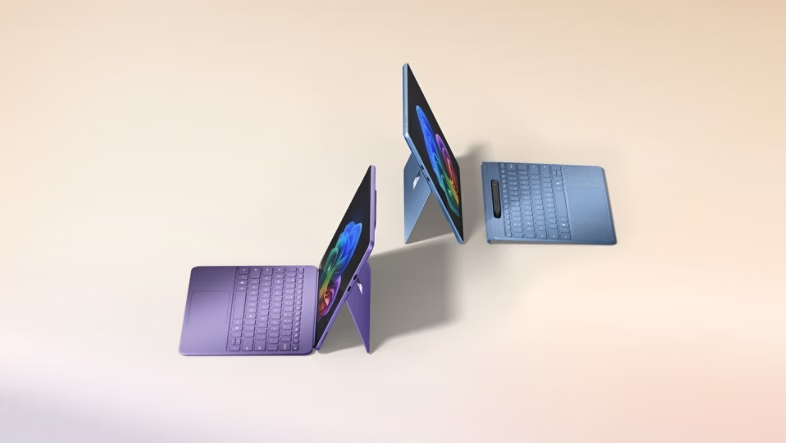
Tips for Buying the Right Laptop for School
Buying a student laptop doesn’t have to be stressful if you know what to look for. Here are some smart tips to help you make the best decision within your budget:
Buy Refurbished or Open-Box Models: Many reputable retailers like Amazon Renewed, Apple Certified Refurbished, and Best Buy Outlet sell like-new laptops at steep discounts — often with warranties included.
Prioritise RAM and SSD Upgrades: More RAM means smoother multitasking. If possible, aim for 16GB RAM and at least 256GB SSD storage . Avoid models with only 4GB RAM or mechanical hard drives (HDDs).
Consider Extended Warranties: Laptops get dropped, spilled on, and carried around all day. An extended warranty or accidental damage protection plan could save you hundreds down the line.
Look for Student Discounts: Many brands like Apple, Dell, Lenovo, and Microsoft offer student pricing directly through their websites or partner retailers like Amazon and Best Buy.
Know Return Policies Before You Buy: Always check return policies before buying online — especially if purchasing ahead of the school year. Some stores allow returns within 15–30 days, while others do not.
Avoid Unnecessary Bloatware: Some budget laptops come preloaded with trial software, toolbars, or subscriptions you don’t need. Stick to models with clean OS installs or choose ones with Linux or macOS , which tend to be bloat-free.
Finding the Right Fit for Your Academic Journey
Choosing the right laptop is one of the most important tech decisions a student can make. Whether you’re starting high school, entering your first year of college, or studying remotely, having a reliable device that fits your academic needs and budget can set the stage for success.
From the powerful and versatile Lenovo IdeaPad Slim 5 , to the ultra-portable ASUS ZenBook 13 OLED and Microsoft Surface Laptop , there’s no shortage of excellent options under $800. Remember to consider your major, workflow habits, and long-term needs before purchasing. A laptop isn’t just a tool — it’s an investment in your education and future.
We hope this article helps you find the perfect fit for your academic journey. If you found this helpful, feel free to share it with fellow students, and don’t forget to subscribe to ColourMyTech.com for more student-friendly tech guides, reviews, and tips.
FAQ – Everything You’ve Ever Wondered About Student Laptops
Do I really need 16GB RAM as a student?
For most students, 8GB RAM is the minimum , which works well for general tasks like web browsing, writing papers, and attending virtual classes. However, if you’re majoring in fields like engineering, computer science, or graphic design , where multitasking with heavy software is common, 16GB RAM is highly recommended to keep everything running smoothly.
Can I game or edit videos on a sub-$800 laptop?
Yes — but with limits. Some budget laptops, especially those with dedicated graphics cards (like NVIDIA MX550) or strong processors , can handle light gaming and basic video editing using apps like DaVinci Resolve, iMovie, or Adobe Premiere Elements . For serious content creation or AAA gaming, though, you’ll likely want a more powerful machine.
Is a Chromebook good enough for college?
Chromebooks are excellent for basic productivity, online learning, and casual use , especially if you rely heavily on Google Workspace, Zoom, and YouTube . However, they’re not ideal for software that requires Windows or macOS , such as AutoCAD, MATLAB, Photoshop, or Visual Studio . If your coursework doesn’t require these tools, a Chromebook can be a smart, affordable option.
Should I buy a touchscreen or 2-in-1?
If you plan to take handwritten notes, sketch, or watch lectures while commuting, a touchscreen or 2-in-1 convertible can offer added flexibility. These models often support stylus input , making them great for art students, note-takers, and digital learners . For traditional typing-based workflows, however, a standard laptop will suffice.
Can I run Adobe Suite or AutoCAD on these laptops?
Some of the laptops listed — particularly those with Intel Core i5/i7 or AMD Ryzen 5/7 processors and at least 8GB RAM — can run Adobe Photoshop, Illustrator, and AutoCAD at a basic level . However, performance may vary depending on the complexity of your projects. For smoother operation, look for models with 16GB RAM and dedicated graphics when possible.
What’s the difference between Intel and AMD for students?
Both Intel and AMD offer strong options in the budget range:
- Intel Core i5/i7 : Known for better compatibility with certain professional software and generally stronger single-core performance
- AMD Ryzen 5/7 : Often provides better multicore performance and battery efficiency at a lower cost
In practical terms, both are capable for most student workloads — choose based on availability, price, and preferred features.


